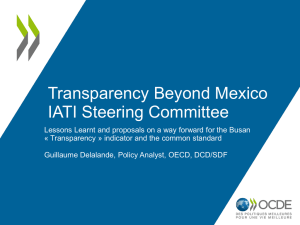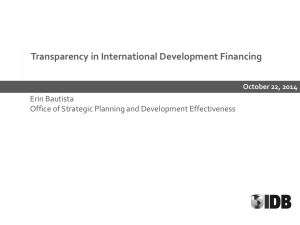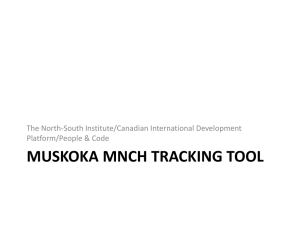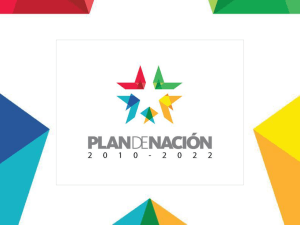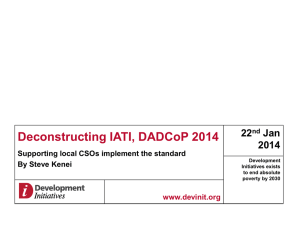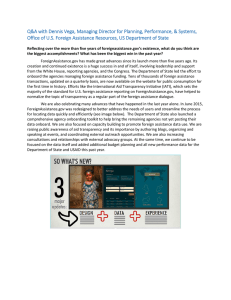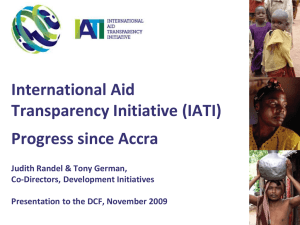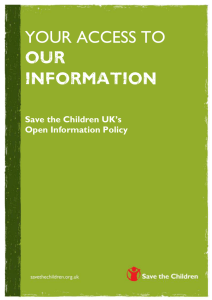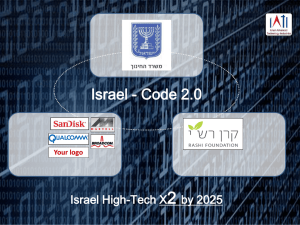Conducive political, institutional and policy environment
advertisement
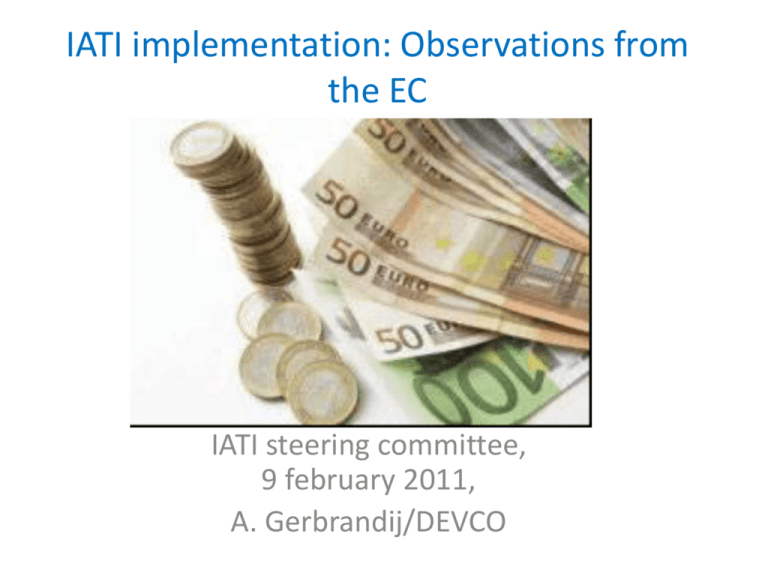
IATI implementation: Observations from the EC IATI steering committee, 9 february 2011, A. Gerbrandij/DEVCO Conducive political, institutional and policy environment •High political commitment: Commissioner Piebalgs speech in DEVCO seminar + call from his cabinet •EU Foreign Affairs Council Conclusions, December 2010: fourth chapter on transparency and mutual accountability •Aid transparency part of EU-US transatlantic dialogue •Advocacy role of CSO’s: letters to high level; lobbying for EU approach; and transparency assessment (EC 4th place with 70,2% score) •Existing DEVCO processes on aid transparency •Challenge: IATI status and set up Hearts & Minds (1) •Collaboration between aid effectiveness experts, IT and DAC reporters, started from beginning (2008) •Added value: 3 monthly reporting, non-quantitative •Trigger for internal quality improvements •Linked with new related processes: for example Project Cycle Management Platform for documents •Advantage: ‘IT Strategies’ team in same unit as aid effectiveness (in previous AIDCO structure until 2010) Hearts & Minds (2) •‘Hot potato’ effect! + the car production line analogy •Mind sets determined by people’s own mandates •Capacity and human (and financial) resources constraints •Feeling of working with double standards (DAC/CRS and IATI) •Attention a bit lost between July and December Factual steps (1) •Laid down in internal procedure, approval by management: Schema Directeur DEVCO, January 2011 •Coverage by DEVCO 75% of EC ODA (ENLARGEMENT, ECHO and EIB not in (yet)) •Useful visit of IATI support team on 1 February 2011 •Consideration of further IATI technical support •IATI EC Implementation Schedule ready in course of February Factual steps (2) •Concrete request for actions to DEVCO services •Setting up internal ad hoc implementation structure •Planning to disclose data phase 1 and parts of phase 2 (documents) as of October/November 2011 •Make data available in user friendly way through EC Joint Research Centre TR-AID initiative (database/aggregator) •Plan to present aid transparency package at Busan HLF IV •Challenge: to link with country level through EU Delegations Conclusions •High level commitment essential but not sufficient •Overcome bureaucratic resistance to change and non-routine work •Ensure participation at different levels: political, policy (aid effectiveness) and technical (IT, DAC reporting) •Use existing processes/procedures •Lay down specific actions, deadlines and actors in documents/instructions •Incremental approach and keep it manageable Thank you •High level commitment essential but not enough •Overcome bureaucratic resistance to change and nonroutine work •Work at different levels: political, policy (aid effectiveness) and technical (IT, DAC reporting) •Use existing processes/procedures •Lay down specific actions, deadlines and actors in documents/instructions •Incremental approach and keep it manageable
